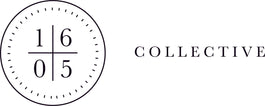Gerhard Richter: an art journey

Richter's interest in art and culture began to take shape in the aftermath of the World War II. Everything started with a Christmas gift from his mother - a simple plate camera. Later on, Werner Jungmichel, a camera shop owner in Waltersdorf (the province of Dresden) teaches the young Richter how to develop photographs, a skill that will prove useful in his career as an artist.
The drawing came already after the war, at the age of 15. One of his early sketches, from 1946, was a nude figure copied from a book. His parents were both extremely proud and ashamed of this first masterpiece. Starting from nudes, he then switched to landscapes and self-portraits, working mainly with watercolours. In a 2002 interview with Robert Storr, Richter describes a watercolour showing a group of people dancing, drawn in Waltersdorf:
"I was at a club, watching the others dance, and I was jealous and bitter and annoyed. So in the watercolour, all this anger is included, at 16. It was the same with the poems I was writing – very romantic, but bitter and nihilistic, like Nietzsche and Hermann Hesse."
The artist, later on has studied in two most prestigious European art academies Dresden Academy of Fine Arts and Kunstakademie Düsseldorf, where he later taught as a professor for over 15 years.
In 2002, MoMA in New York held a major retrospective of Richter's work, titled Forty Years of Painting. Curated by Robert Storr, the exhibition featured 190 works and was one of the most comprehensive exhibitions of Richter's oeuvre to date. It was also the exhibition that confirmed his status as one of the leading artists in the world. His introduction to the United States was described by Storr as "long overdue".
However, coming back to photography, the medium passionately embraced by the artist. Richter created various painting pictures from black-and-white photographs during the 1960s and early 1970s, basing them on a variety of sources: newspapers and books, private snapshots, aerial views of towns and mountains, seascapes, portraits to name but a few. For the series Forty-eight Portraits (1971–72), he chose mainly the faces of famous composers such as Gustav Mahler and Jean Sibelius, and of writers like H. G. Wells and Franz Kafka.

Richter began making prints in 1965. In the period 1965–1974, the artist made most of his prints of the same or similar subjects in his paintings. Looking for inexpensive mediums that would lend a "non-art" appearance to his work, Richter has explored a variety of photographic printmaking processes. Among them: screenprint, photolithography and collotype.
After more than 70 years of interest in art, Richter continues being a sacral source of energy, a fount that we drink from and make our existence, however not free of suffering, but definitely lighter and more enjoyable.
